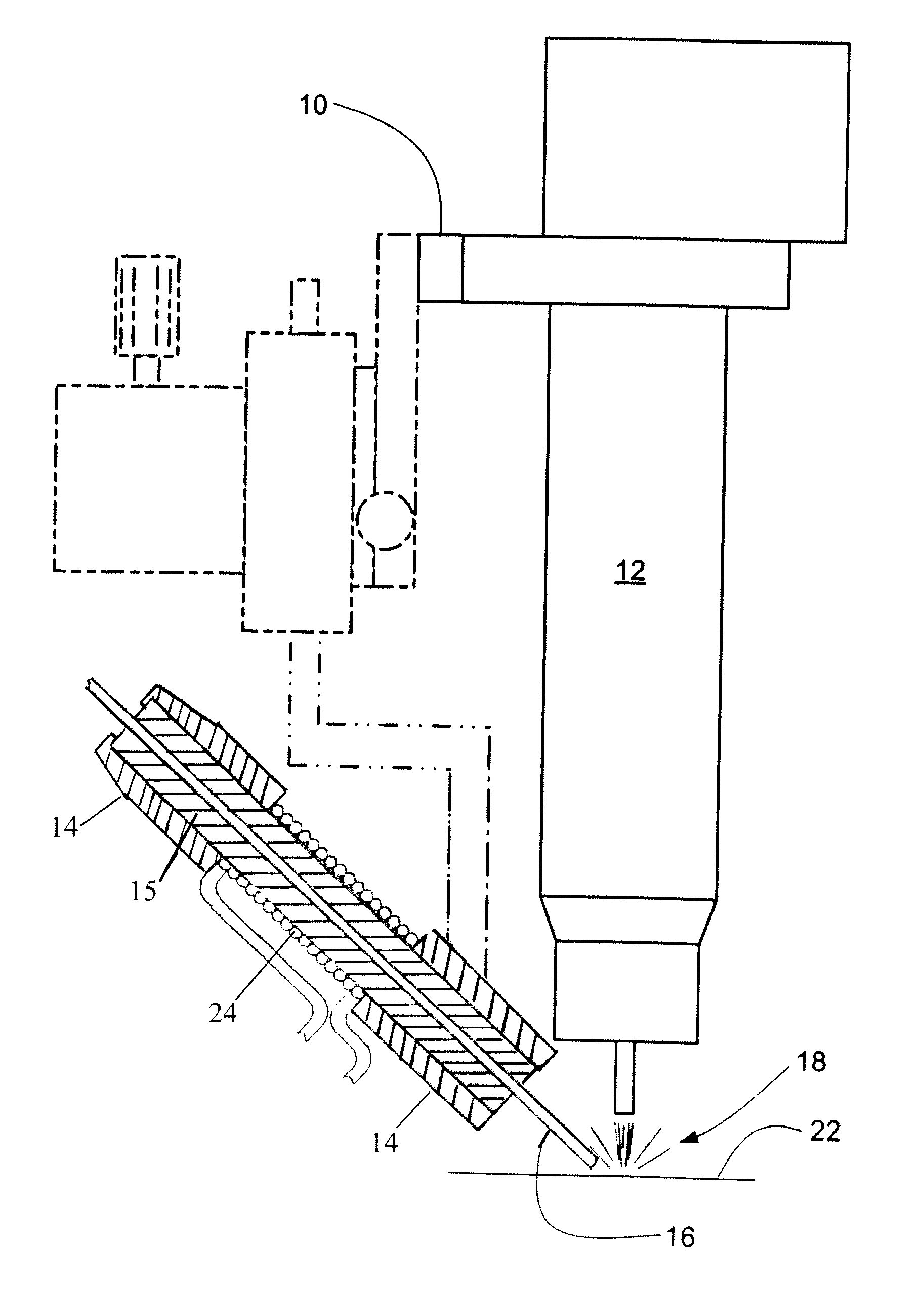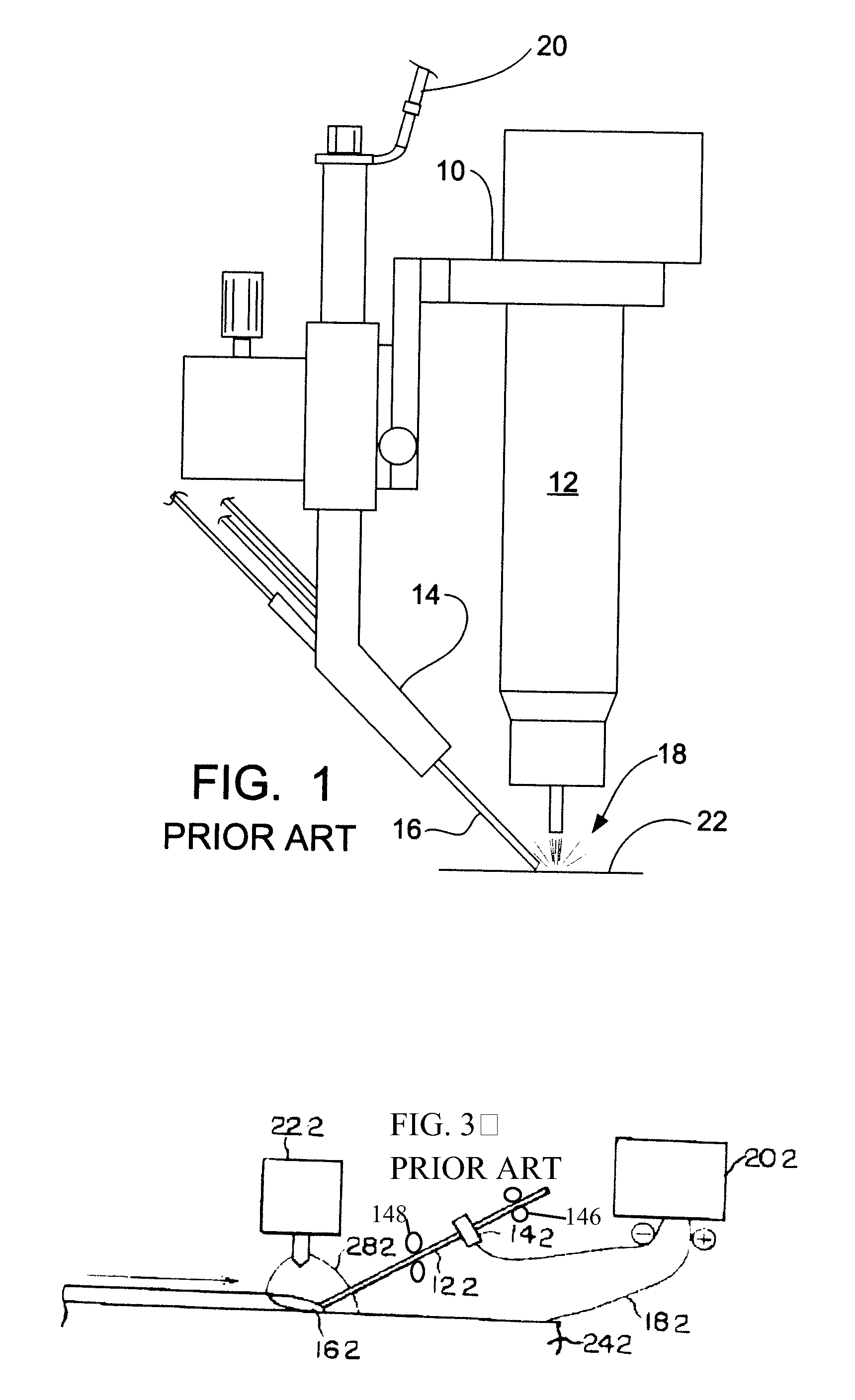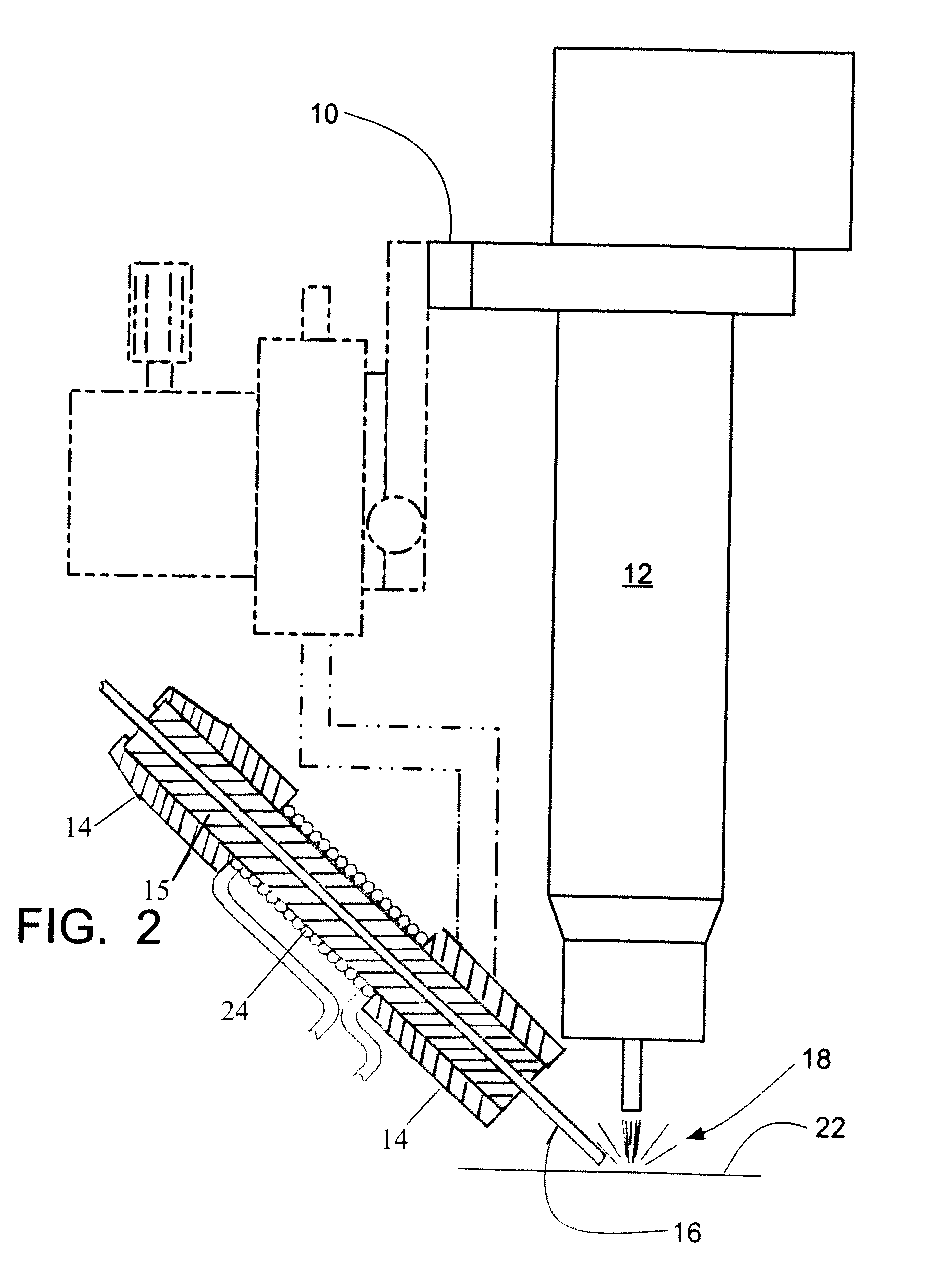Induction heated, hot wire welding
a technology of induction heating and hot wire welding, which is applied in the direction of welding apparatus, laser beam welding apparatus, manufacturing tools, etc., can solve the problems of increasing the risk of electrical shorts, the current hot wire technique has limitations, and the process of iwamoto offers no practical means to prevent electrical contact between the induction coil and the filler wire, so as to prevent heat loss and high temperature corrosion (galling), the effect of high thermal shock resistan
- Summary
- Abstract
- Description
- Claims
- Application Information
AI Technical Summary
Benefits of technology
Problems solved by technology
Method used
Image
Examples
Embodiment Construction
[0015]The prior art arrangement for HW-GTAW (hot wire gas tungsten arc welding) is illustrated in FIGS. 1 and 3. For FIG. 1, a framework 10 supports the gas tungsten arc torch 12, and a delivery guide 14 for the filler metal wire 16. The delivery guide 14 is used to guide the filler metal wire 16 to the area of the welding arc 18 adjacent the gas tungsten arc torch 12. Means for delivering electrical current to the filler metal wire 16 is supported on the framework. An electrical cable 20 is provided with an electrical contact that is in contact with the filler metal wire 16 in the delivery guide 14 in close proximity to the welding arc 18 to deliver a current into the filler wire 16. The electrical current preheats the wire 16 before it reaches the welding arc 18 as long as the filler wire 16 maintains a closed electrical circuit by remaining in contact with the weld puddle on the work piece 22.
[0016]For FIG. 3, a solenoid coil is used to inductively heat a traveling filler wire fo...
PUM
| Property | Measurement | Unit |
|---|---|---|
| Temperature | aaaaa | aaaaa |
| Flow rate | aaaaa | aaaaa |
| Current | aaaaa | aaaaa |
Abstract
Description
Claims
Application Information
 Login to View More
Login to View More - R&D
- Intellectual Property
- Life Sciences
- Materials
- Tech Scout
- Unparalleled Data Quality
- Higher Quality Content
- 60% Fewer Hallucinations
Browse by: Latest US Patents, China's latest patents, Technical Efficacy Thesaurus, Application Domain, Technology Topic, Popular Technical Reports.
© 2025 PatSnap. All rights reserved.Legal|Privacy policy|Modern Slavery Act Transparency Statement|Sitemap|About US| Contact US: help@patsnap.com



